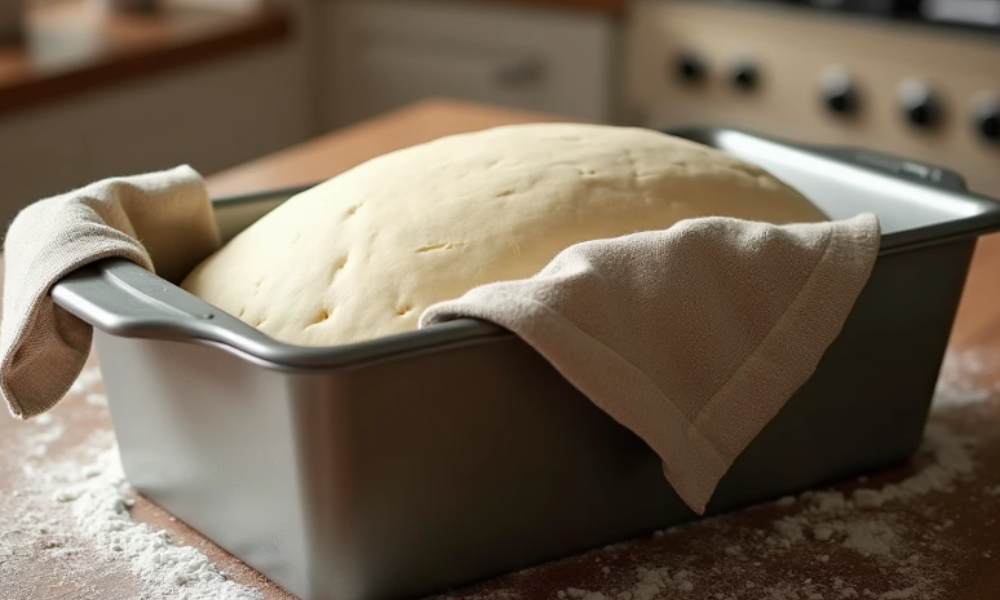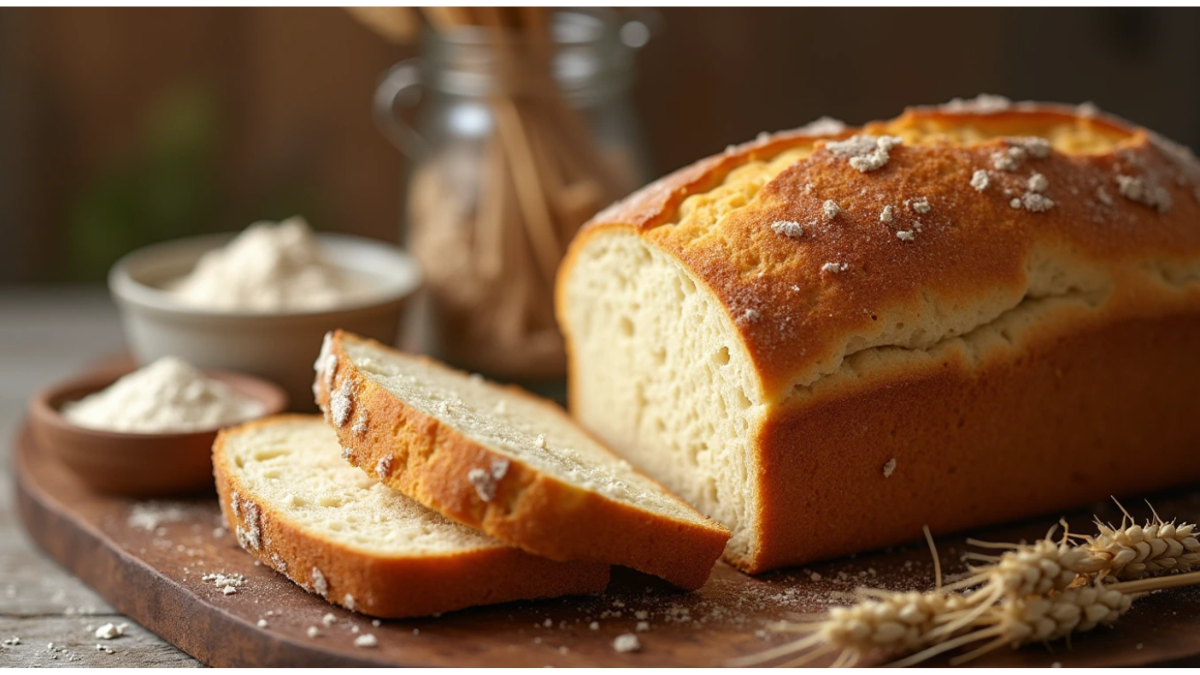Whether you’ve been diagnosed with gluten intolerance, celiac disease, or are simply trying to reduce gluten in your diet, finding a good gluten-free bread can be challenging. You’ve probably encountered gluten-free options that are dry, crumbly, or bland. But don’t give up hope—gluten-free bread can be just as delicious and satisfying as its traditional counterpart. This guide will walk you through everything you need to know, from the basics of gluten-free bread to tips on making it at home, and even recipes to try yourself.
What is Gluten-Free Bread?
If you’ve ever wondered what sets gluten-free bread apart from regular bread, it all comes down to the absence of gluten, a protein found in wheat, barley, and rye. Gluten is what gives traditional bread its chewy texture, but for those who need to avoid it, alternatives are required.
Gluten-free bread is made from various gluten-free flours, such as rice flour, almond flour, and tapioca flour. These flours don’t contain gluten, so they need a bit of extra help to achieve the structure and texture that traditional bread has. That’s where ingredients like xanthan gum, yeast, and eggs come in.
Why Go Gluten-Free?
Going gluten-free can significantly improve your health if you have celiac disease or gluten sensitivity. But even if you don’t, you might find that gluten-free bread makes you feel lighter and more energized. It can also help those who suffer from digestive issues related to gluten.
Types of Gluten-Free Bread
Not all gluten-free bread is created equal. There are several types, each with its own unique texture and flavor. Here’s a breakdown of the most common styles:
1. Traditional Loaf Style
If you miss your classic sandwich bread, this style of gluten-free bread is for you. It’s soft, airy, and similar to what you’d expect from regular white or whole-wheat bread. This kind of bread is typically made with a combination of rice flour, potato starch, and sometimes almond flour. It’s great for making toast or sandwiches.
2. Artisan Bread
Gluten-free artisan bread is denser and has a more rustic texture. It’s often made with a variety of gluten-free flours, such as rice flour, tapioca flour, and chickpea flour. These loaves typically have a crispy crust and a slightly chewy interior, making them perfect for enjoying with soups or as a side dish at dinner.
3. Flatbreads
Flatbreads like gluten-free pita, naan, and focaccia are perfect for those who want something a bit different from traditional bread. These breads are typically softer and thinner, and they are perfect for wraps or as an accompaniment to dips and spreads.
4. Bread Rolls & Buns
If you’re missing your burger buns or dinner rolls, you’ll be pleased to know that gluten-free versions exist. These can be made with rice flour, potato starch, and sometimes a bit of tapioca starch to give them that soft, pillowy texture you crave.
The Best Ingredients for Gluten-Free Bread
Making gluten-free bread at home requires using the right ingredients. Here’s a list of the key ingredients you should be familiar with:
Essential Gluten-Free Flours

- Rice Flour: The most common flour used in gluten-free bread. It’s light and versatile, making it an excellent base for many recipes.
- Almond Flour: Adds richness and moisture to your bread. It’s often used in recipes that require a denser loaf.
- Tapioca Flour: Known for giving gluten-free bread a chewy texture. It helps with elasticity, making the bread more like traditional bread.
- Chickpea Flour: High in protein and helps create a dense, hearty loaf. It’s perfect if you prefer a denser bread.
Other Essential Ingredients
- Xanthan Gum or Guar Gum: These are added to give the bread its structure and to mimic the role gluten plays in traditional bread.
- Yeast: Essential for leavening, just like in regular bread. Use instant yeast for ease of use.
- Salt, Sugar, and Oils: These ingredients are necessary for flavor, texture, and to enhance the bread’s moisture.
How to Make Gluten-Free Bread at Home
Making your own gluten-free bread is easier than you think! Here’s a basic guide to get you started:
Basic Steps for Making Gluten-Free Bread
- Prepare the Dry Ingredients: Start by combining your gluten-free flours and adding a pinch of salt and any other dry ingredients like xanthan gum or baking powder.
- Add Wet Ingredients: Mix in your liquids—typically warm water, yeast, and oils. Stir until combined.
- Mix the Dough: Gluten-free bread dough is often stickier than traditional dough. You’ll need to either mix it by hand or with a stand mixer until it reaches the right consistency.
- Let It Rise: Proof the dough for about 1–2 hours in a warm place. Since gluten-free bread doesn’t rise as much as traditional bread, be patient and allow the dough to rise fully.
- Bake: Preheat your oven and bake for about 30–35 minutes at 375°F. Once done, let it cool for a few minutes before slicing.

Tips for Perfect Gluten-Free Bread
- Use a Flour Blend: While you can use single flours, gluten-free flour blends are specially formulated to give the bread a better texture.
- Don’t Skip the Gums: Xantham gum or guar gum help the bread hold together and rise properly. Without them, your bread may fall apart.
- Proof Properly: Gluten-free dough needs more time to rise, so make sure to give it plenty of time.
Nutritional Benefits of Gluten-Free Bread
When it comes to nutrition, gluten-free bread can be both healthy and nourishing. Since it’s made with flours like almond flour and chickpea flour, it can be a source of protein, fiber, and healthy fats.
However, it’s important to remember that not all gluten-free bread is created equal. Some commercially available gluten-free loaves can be higher in sugar and lower in fiber. Be sure to check the labels and opt for brands that use nutrient-dense ingredients.
Benefits You’ll Love:
- Better Digestion: For those with gluten sensitivity, gluten-free bread can ease digestive discomfort.
- More Nutrient-Dense Options: Homemade gluten-free bread can be packed with healthy ingredients like nuts, seeds, and legumes.
- No Bloating or Fatigue: Many people report feeling more energetic and less bloated after eliminating gluten from their diet.
Frequently Asked Questions About Gluten-Free Bread
What makes bread gluten-free?
Gluten-free bread is made from flours that do not contain gluten, such as rice flour, almond flour, and tapioca flour. These ingredients create a loaf without gluten’s structural properties, so other ingredients like xanthan gum or guar gum are used to replicate that structure.
Can I substitute regular flour with gluten-free flour in my recipes?
Yes, but it’s important to use a specific gluten-free flour blend designed for baking. Gluten-free flours behave differently than wheat flour, so adjustments in moisture, rising time, and ingredients are usually necessary.
Is gluten-free bread healthier than regular bread?
Gluten-free bread can be healthier, depending on the ingredients used. It’s typically lower in processed flour and can be made with more nutritious ingredients like almonds or chickpeas. However, some store-bought gluten-free loaves may contain added sugars and preservatives, so it’s important to check the labels.
Conclusion
Gluten-free bread doesn’t have to be bland or boring. With the right ingredients and a little patience, you can make bread that rivals traditional loaves in taste and texture. Whether you prefer soft sandwich bread, rustic artisan loaves, or crunchy flatbreads, there’s a gluten-free option out there for you. So why not give it a try? Start experimenting with these gluten-free bread recipes today and enjoy the delicious and healthy results!
Call to Action:
Are you ready to bake your own gluten-free bread at home? Explore our gluten-free recipes and tips to get started on your baking adventure. Don’t forget to share your creations with us—tag us on social media and show us how your bread turned out!
